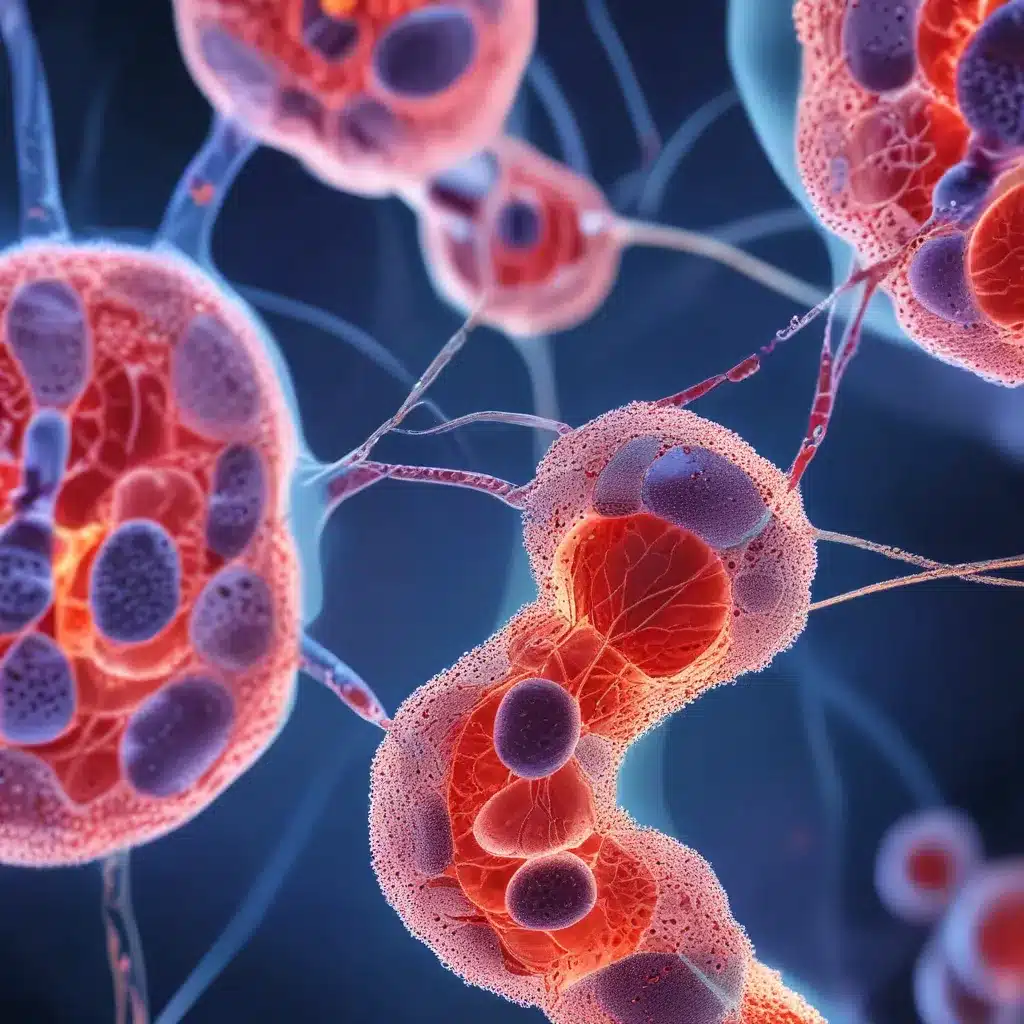The Marvels of Stem Cells: Unlocking the Body’s Repair Potential
You know, when I first heard about stem cells, I have to admit, I was a bit skeptical. I mean, the idea of these little “master cells” being able to transform into all kinds of specialized tissues and potentially heal our bodies? It sounded like something straight out of a science fiction movie. But as I delved deeper into the world of regenerative medicine, I realized just how incredible and life-changing this field could be.
Let me start by telling you a bit about what stem cells are and why they’re so darn special. Stem cells are essentially the building blocks of the human body – they’re the raw materials that can develop into different cell types, like blood cells, brain cells, muscle cells, and so on. And unlike regular cells, which can only divide a limited number of times, stem cells have the remarkable ability to self-renew and replicate indefinitely.
This means that stem cells can potentially be used to replace or repair damaged tissues and organs, which is the foundation of regenerative medicine. Imagine if you could use your own stem cells to heal a debilitating injury, or even treat a chronic condition like Parkinson’s or diabetes. It’s the stuff of science fiction, but it’s quickly becoming a reality.
The Stem Cell Spectrum: From Embryonic to Adult
Now, there are different types of stem cells, and they have varying degrees of versatility. At the top of the hierarchy, you’ve got embryonic stem cells – these are the most potent, pluripotent cells, meaning they can differentiate into virtually any cell type in the body. These cells are harvested from early-stage embryos, which has led to some ethical debates, but the research in this area has been incredibly promising.
On the other end of the spectrum, you have adult stem cells, which are found in various tissues throughout the body, like the bone marrow, fat, and even the brain. While they’re not as versatile as embryonic stem cells, they’re still incredibly valuable for regenerative medicine. See, adult stem cells are often specific to the tissue they reside in, like hematopoietic stem cells in the bone marrow that can replenish the entire blood and immune system.
And in the middle, you’ve got this fascinating group called induced pluripotent stem cells (iPSCs). These are regular adult cells that have been genetically reprogrammed to behave like embryonic stem cells. Crazy, right? This breakthrough, for which the Nobel Prize was awarded in 2012, has the potential to sidestep the ethical concerns around embryonic stem cell research while still providing that same level of versatility.
Stem Cells in Action: Regenerative Therapies
So, how are these stem cells actually being used in regenerative medicine? Well, the possibilities are truly mind-boggling. Researchers are exploring ways to use stem cells to treat a wide range of conditions, from cancer and autoimmune disorders to neurodegenerative diseases and even heart failure.
Take leukemia, for example. Patients with certain blood cancers like leukemia and lymphoma often undergo stem cell transplants, where their own damaged stem cells are replaced with healthy ones from a donor. This can effectively “reboot” the blood and immune system, allowing the body to fight off the disease.
Mayo Clinic has been at the forefront of this research, and they’ve seen some incredible results. Patients with conditions like Parkinson’s disease, type 1 diabetes, and even spinal cord injuries have all shown promising improvements after receiving stem cell-based treatments.
But it’s not just about replacing damaged cells – stem cells can also be used to regenerate tissues and organs. Researchers are working on growing new heart muscle cells to repair damaged hearts, creating insulin-producing cells to treat diabetes, and even developing neural stem cells to potentially restore function in people with neurological conditions.
The Future of Regenerative Medicine: Challenges and Breakthroughs
Of course, as with any groundbreaking medical advancement, there are still some challenges and hurdles to overcome. For one, there are ongoing ethical debates around the use of embryonic stem cells, which some people believe should be off-limits. And even with adult and induced stem cells, there are concerns about the potential for tumor growth and immune system rejection.
But the scientific community is making strides every day to address these issues. Recent research has shown promising results in using stem cells to treat joint conditions like osteoarthritis, and the team at IT Fix is keeping a close eye on the latest developments in this space.
And let’s not forget about the potential of stem cells for drug testing and toxicology studies. By using stem cells that have been programmed into specific cell types, researchers can test new drugs for safety and effectiveness without putting human subjects at risk. It’s a game-changer for the pharmaceutical industry, and it’s just another example of how stem cells are revolutionizing the world of medicine.
So, as you can see, the future of regenerative medicine is both exciting and full of promise. While there’s still a lot of work to be done, I can’t help but be amazed by the incredible potential of these tiny, yet mighty, stem cells. Who knows – maybe one day, we’ll be able to treat everything from spinal cord injuries to heart disease with a simple injection or transplant. It’s the stuff of science fiction, but it’s rapidly becoming science fact.













